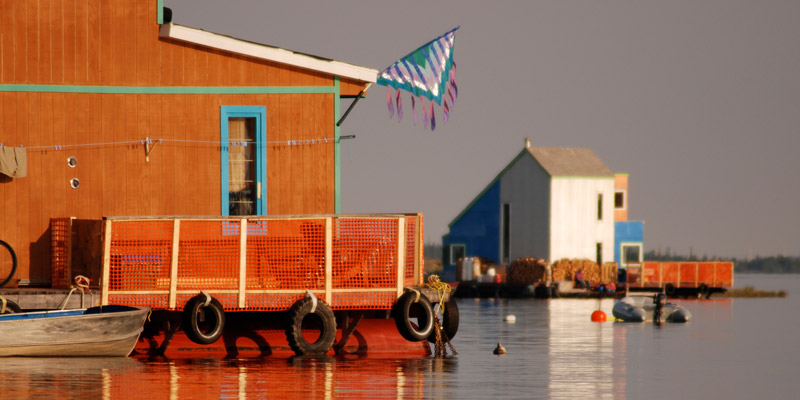SWEEP – The Slave Watershed Environmental Effects Program
Paul Jones, Associate Professor, University of Saskatchewan (2013-2015)

Challenge
Cumulative effects are often individually minor, but become collectively significant when accumulated over space and time. Some of the watershed challenges in the Slave River and Delta in the Northwest Territories are associated with resource development, man-made changes in hydrology in the head waters, and climate change.
The Slave River Delta is essential to surrounding First Nations communities economically, socially, and culturally. Repeated prolonged and diverse impacts on the river have eroded First Nations belief in the quality of the river’s waters and related biota. Key community concerns include: water quality, hydrology, sediment load, wildlife, air, climate, vegetation, fish, and insects. These communities, whose waters and lands are impacted, need a means to assess the current situation, monitor future changes, and acquire knowledge to inform management decisions.
The project team focused on the development of capabilities within communities to establish a watershed monitoring program for the Slave River Delta.
Project
This project developed a community-based program that empowered communities to collect, interpret and use a system of aquatic environmental indicators to address key concerns and priorities in the Slave River and Delta watershed. Indicators focused on cumulative effects and potential contributions from different stressors. This project developed two types of indicators: Type 1 indicators were measured by the community and included direct biological measurement and observations based on local and traditional knowledge. Traditional knowledge was gathered through sharing circles and one-to-one interviews. In the past, information gathered through sharing circles informed First Nation communities, as well as provincial, territorial and federal policy-makers. Type 2 indicators provided a baseline assessment of the condition of the river system, including measures of water quality, bottom-dwellers, hydrology and fish health.
This project imofoed type 1 and 2 indicators through a Bayesian Belief Network (BBN), integrating qualitative and quantitative information to identify where uncertainty is greatest and whether more data is required.
Outputs
- Presentations to larger communities, as well as meetings with smaller communities to share research processes and actionable results.
- SWEEP partnered with Aurora College and the Deninu School to provide physical hubs for the community-based monitoring programs. Faculty of these institutions facilitated the engagement of Western scientists with students and the wider community.
- SWEEP provided the necessary equipment and training for staff to incorporate suitable monitoring activities into their science and math curricula over two years.
Outcomes
- Development of a sustainable community-based monitoring program which incorporates relevant existing data, traditional knowledge and Western science. The program will develop a system to integrate, interpret and explain the data to the communities.
- The project was a collaborative effort among researchers and the community that addressed unique social and environmental issues and provided a mechanism for youth and elder engagement.
- Developing community-based environmental indicators provided tools and procedures that were significant to water governance across Canada. The development of relevant community-based bioindicators based on environmental stressors in the North will assist in the establishment of similar programs.





